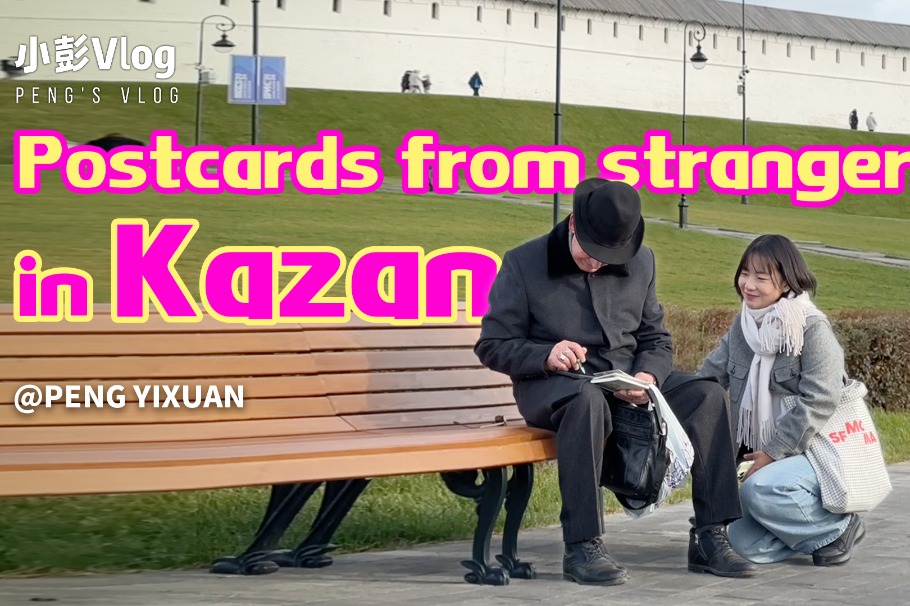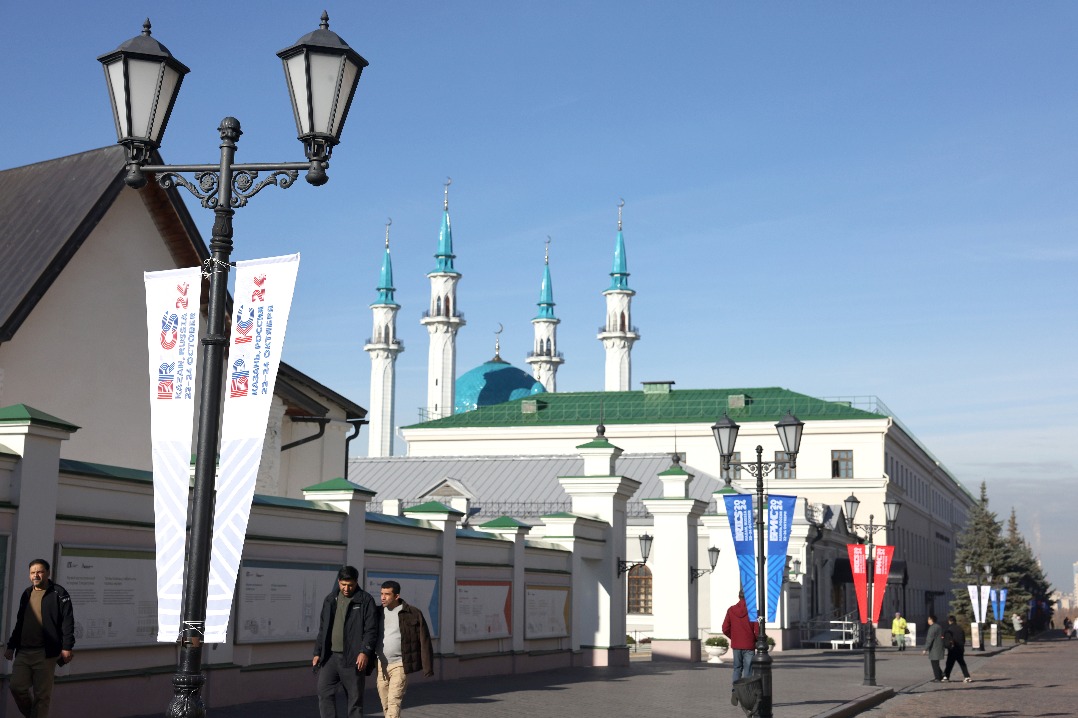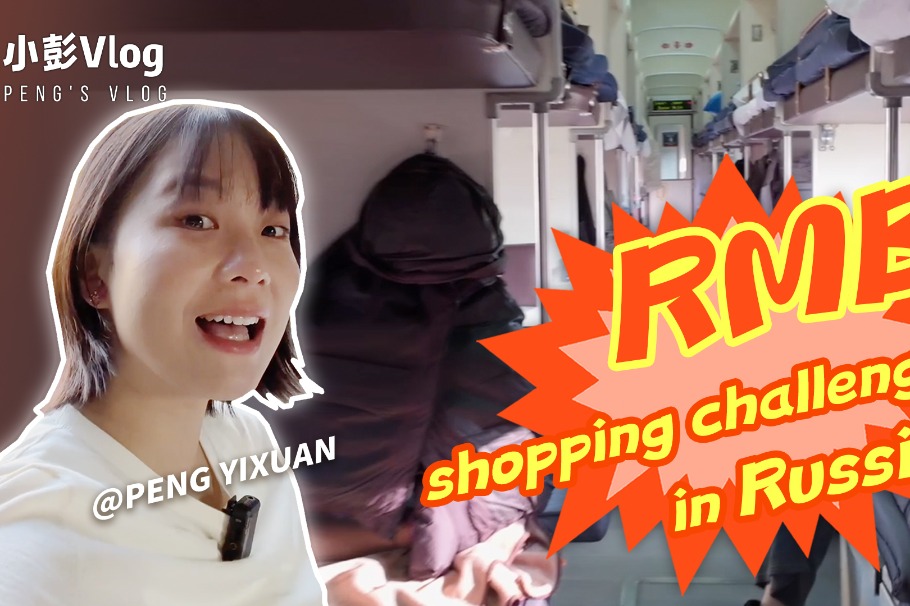China at forefront of textile industry trends, sustainability
By MINGMEI LI in New York | chinadaily.com.cn | Updated: 2024-07-18 11:10
From yarns and fabrics to finished garments and home products — each stitch connects China's textile industry to the world.
This week, more than 500 Chinese companies are displaying their latest innovations and sustainability efforts at a major industry event at the Javits Center in New York City.
The 25th China Textile and Apparel Trade Fair, Texworld New York City, Apparel Sourcing New York City, and Home Textiles Sourcing Expo New York City are participating in the three-day exhibition at the sprawling convention center in Manhattan, which started on Tuesday.
It primarily focuses on two major themes: "Future Trends" and "Sustainability". More companies are joining the eco-friendly movement; 137 Chinese companies have environmentally friendly certifications, about 29 percent of participants.
The semiannual exhibition is jointly organized by the Sub-Council of Textile Industry, China Council for the Promotion of International Trade (CCPIT), and Messe Frankfurt North America.
More than 700 enterprises from 22 countries and regions will converge in an exhibition area of more than 21,500 square feet (20,000 square meters).
Long lines formed in the registration area, made up of buyers from the textile and apparel industry, including retail giants Target, Macy's, Walmart, JCPenney, Athleta, American Eagle and Ralph Lauren.
Chinese companies also featured those companies' logos at their booths, indicating who buys their products.
"We have participated in this exhibition for more than a decade. The biggest change we've seen is the gradual upgrading of the Chinese textile industry," said Sheng Wubin, CEO of Ningbo Mondiland Fashions, a maker and distributor of men's suits and coats.
"We are now producing more advanced products, with faster response times in product development, higher technical requirements and superior quality," Sheng told China Daily.
The company has annual revenue of $30 million, with markets in the Americas, Europe and Japan.
"Ningbo is the hometown of tailors. Our local industry integrated with the development of Ningbo and Shanghai very early," he said. "In the 1920s and 1930s, we introduced many Italian, Japanese and German suit-making technologies and equipment into our garment town, forming a complete system."
Sheng said that the company's greatest strength "lies in our understanding of different markets and meeting their stylistic needs with significant changes and improvements".
"Ningbo's strong supply chain has also provided us with substantial support," he said. "We hope to see Chinese diplomats wearing suits designed and made in China on the international stage."
Zameer Syed, the operational director of SNS Fashion Ltd, noted that speed of delivery and fabric innovation are strengths of the Chinese manufacturers.
SNS, which started operations in China in 2002, supplies fabrics to most US apparel branches.
"All the Chinese supplies are not regular supplies; they have innovations and sustainability," Syed said.
Constantin von Vieregge, president and CEO of Messe Frankfurt, said: "There was always the 'stigma' that Chinese exhibitors are lower quality, the cheap fashion. But that has changed completely over the years. So you can see they're getting better and better from a quality perspective."
The company has been cooperating with the CCPIT for years, bringing Chinese companies and exhibitors to North America, France, Brazil, and Singapore as well as international exhibitors to Shanghai.
The locations are hubs of international sourcing for yarns and fabrics and serve as selling windows for knitting, hosiery, sports and outdoor wear and digital intelligence technology in the industry.
"It [the partnership with China] is a very, very important one for us because obviously, the Chinese economy is such a strong economy; there are so many great exhibitors," von Vieregge said. "Everybody needs clothes, and we all need affordable clothes."
Von Vieregge said "the consumer wins" in a competitive situation.
He said that having so many Chinese companies participating in the global textile market is not overcapacity but vibrancy.
"The demand will regulate the market," he said. "The strongest partner, or the strongest company, will always win."
"Now we see there are more and more coming from Chinese exhibitors, the awareness about sustainability and you can see every year it's getting better and better," von Vieregge said.
Erin Baker, a fashion student from Kent State University, told China Daily that it's been "really cool to see, just different kind of ways people are trying to implement sustainability into their brands".
"They were able to kind of show us insight into how more brands are the more sustainable, what is behind the scenes," she said. "Sustainability is a trend."
Gigi Marinho, also a fashion student at Kent State, said she was "wowed" watching a demonstration of the design and manufacturing process of a Chinese textile company.
China's textile and apparel exports totaled $115.84 billion from January to May 2024, a 1.4 percent increase over the same period in 2023, according to the General Administration of Customs. In May, export value exceeded $26 billion, a year-on-year increase of 4.5 percent.
Exports to the United States rebounded, growing by 9 percent year-on-year, while exports to ASEAN countries saw a jump year-on-year of 21.3 percent.
























